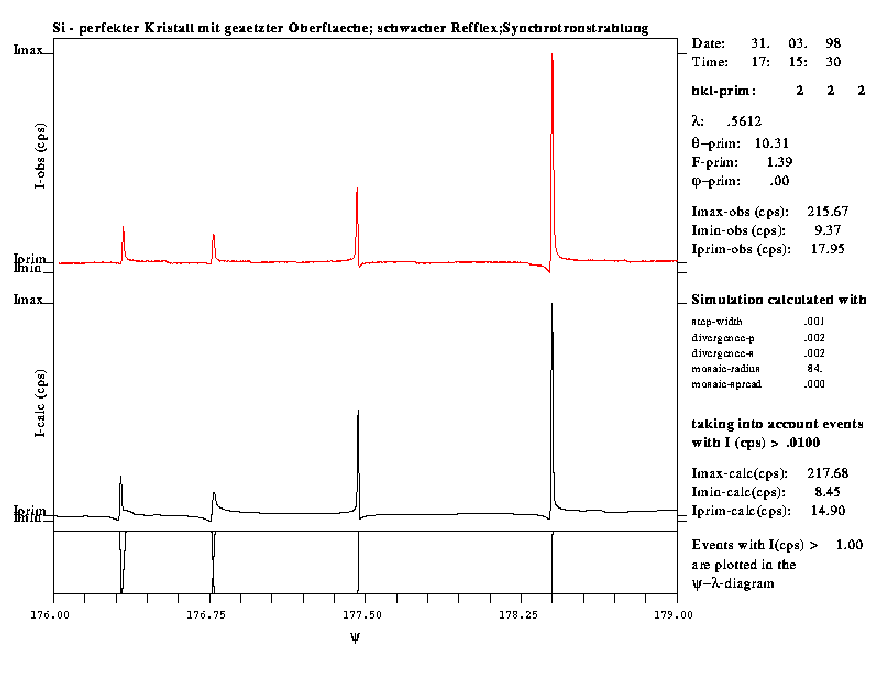
SIMULATION OF MULTIPLE DIFFRACTION PATTERNS OF WEAK PRIMARY REFLECTIONS WITH THE PROGRAM UMWEG-98
Elisabeth Rossmanith
Mineralogisch-Petrographisches Institut der Universitšt
Hamburg, Grindelallee 48, D - 20146 Hamburg, Germany
The determination of precise valence and deformation electron density maps from X-ray diffraction requires Bragg intensity data sets of high accuracy. These intensities can be strongly affected, especially by extinction, absorption and multiple diffraction. Whereas for extinction and absorption effects correction formalism are available in the literature, no expressions exist to correct intensity data sets routinely for multiple diffraction.
The program UMWEG-xx, which represents an attempt to solve this problem, was originaly developed for the simulation of Renninger scans of forbidden reflections. The algorithm used, for example, in UMWEG-95 for the calculation of the peak positions, peak widths and peak hights of multiple diffraction events in y-scans was restricted to the Umweganregung effect [1]. In the case of 'almost forbidden' primary reflections the additional effects of Aufhellung and the Interference between the primary reflection and the beam caused by Umweganregung have to be considered [2]. In the actual version of the program these three effects are taken into account together with primary and secondary extinction and absorption. Additionaly the polarization factors and the peak-width formulae were modified to fit the experimental conditions of X-ray tubes as well as those of the synchrotron radiation. Using strong reference reflections for the determination of the intensity of the incident beam the multiple diffraction pattern is calculated on absolute scale.
Fig. 1: Example for the
graphical output of UMWEG-98
In Fig. 1 an example for the graphical output of UMWEG-98 is given. A three degree multiple diffraction pattern of the 'almost forbidden' 2 2 2 reflection of Si was measured at l = 0.5612 A in the q-y scanning technique (500 steps per degree in y, for each step in y an 81-step-q-scan with 0.001o step width and 1 second measuring time per step was performed) with the 4-circle-HUBER-diffractometer at beamline D3 at HASYLAB (DESY, Germany). A perfect spherical Si-crystal with radius = 84 m was used for the experiment. In the upper diagram of Fig. 1 the measured intensities integrated over the q-scans are plotted against the azimuthal angle y. The theoretical scan is given in the lower part of the graphical output. Having in mind that the input parameters are fixed by the experimental conditions of the experiment (the divergence of the incident beam is determined by the source and sample sizes and the distance between source and sample = 0.002o, mosaic block size = sample size = 84 mm, mosaic-spread = 0o) the agreement between measurement and simulation is satisfactory.
Further information can be obtained via internet: www.rrz.uni-hamburg.de/mpi/rossmanith.